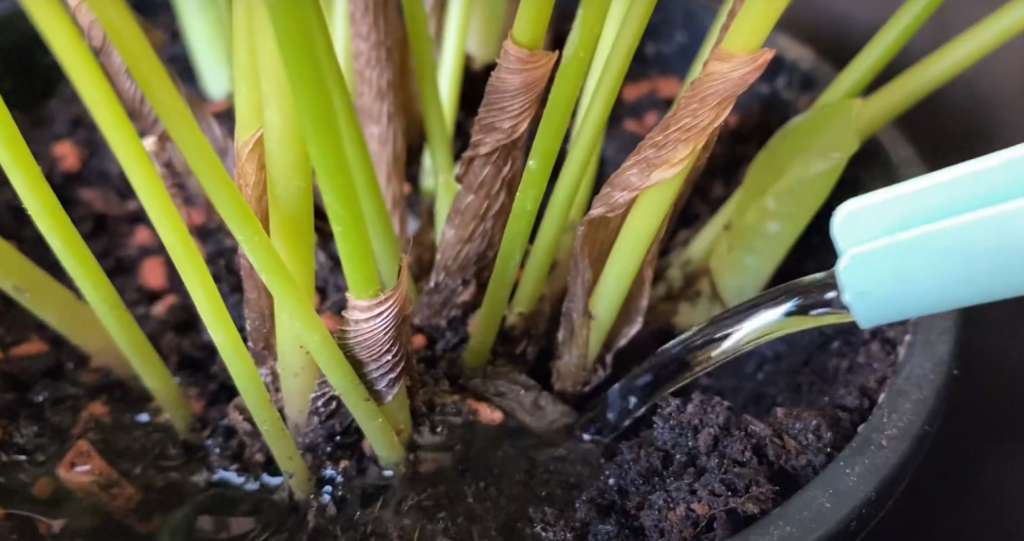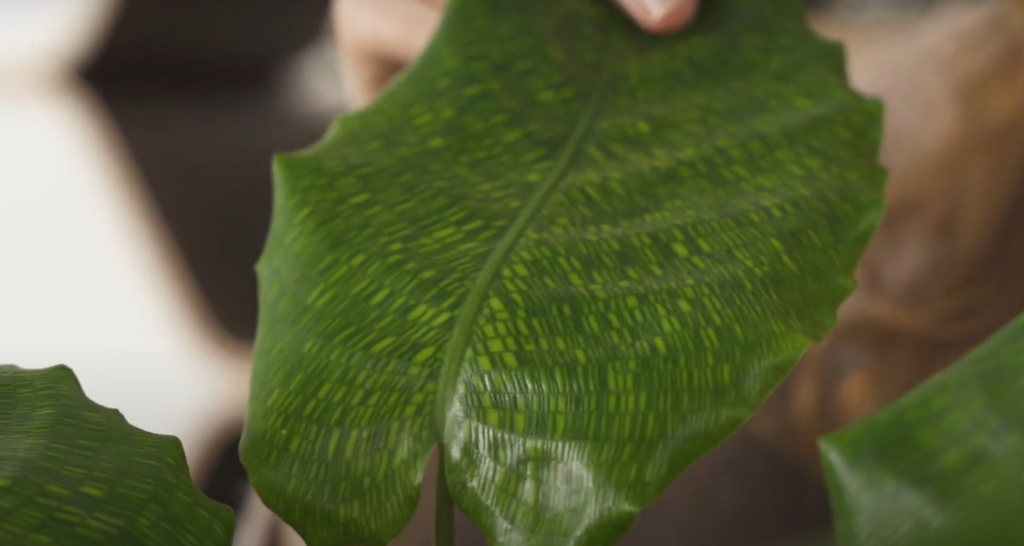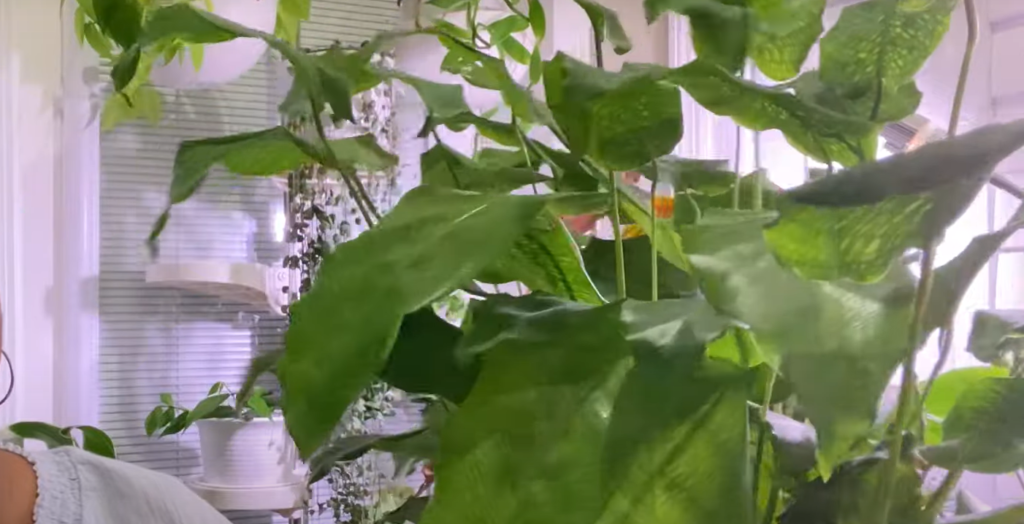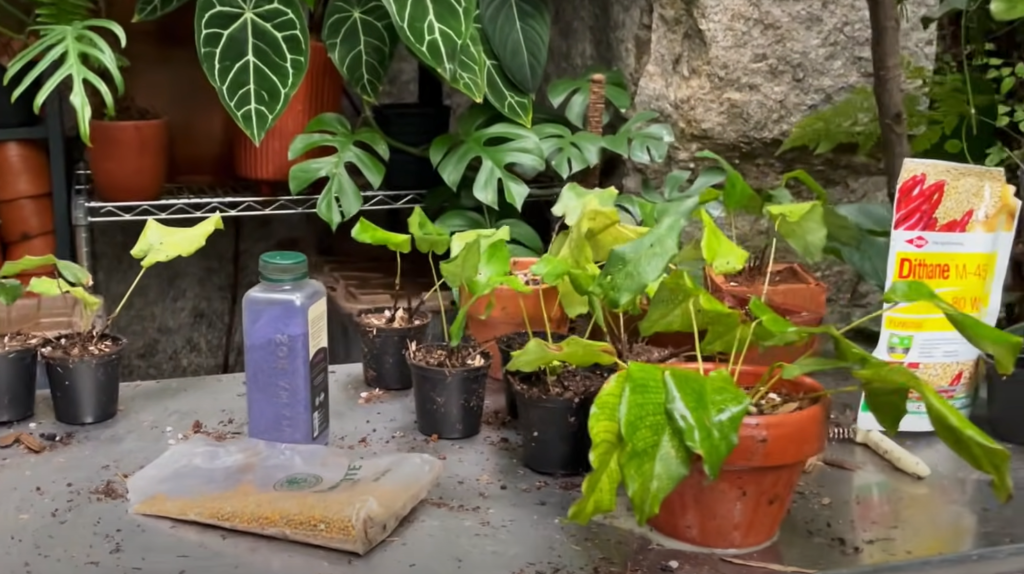Looking for a plant that is both exotic and easy to care for? Look no further than the Calathea Musaica! This beautiful plant can be found in tropical climates all over the world, and its popularity is only increasing as more people discover its many benefits. In this article, we will discuss everything you need to know about the Calathea Musaica, from how to care for it to how to propagate it. We’ll also answer some of the most common questions about this fascinating plant. Thanks for reading!
Calathea Musaica overview
The Calathea Musaica is a member of the Marantaceae family and can be found in many homes throughout America. The Calathea Musaica is a native of Brazil but can be found in many tropical climates all over the world. This plant prefers humid conditions and will do best in an environment that is warm and has high humidity. However, it can also tolerate lower humidity levels as long as it is provided with enough moisture.

This subtropical plant has striking leaves with colorful veins that make it stand out among others, but its beauty isn’t only confined to these traits! The Calathea Musaica is known for being an excellent air purifier, as it helps to remove toxins from the environment. Additionally, this plant is very easy to care for and can thrive in a wide range of conditions.
Each leaf has colorful veins that run throughout it, giving the plant a unique and eye-catching appearance. The Calathea Musaica is also known for its ability to change the color of its leaves depending on the light conditions. In low light, the leaves will often turn a darker green, while in higher light they will take on a more yellow or lime color.The Calathea Musaica is an evergreen plant, meaning that it will keep its leaves all year round. However, it is important to note that this plant is not frost-tolerant and should be kept indoors or in a greenhouse if there is any chance of frost.
Its also known by other names such as the Prayer Plant, Rattlesnake Plant, and Herringbone Plant. The original name ‘Maranta bella’ was given to it by Swedish botanist Carl Peter Thunberg and its meaning is ‘beautiful maranta’. The name was later changed to Calathea bella by Carlos Linnaeus, and then to its current name, Calathea Musaica, in honor of the plant’s mosaic-like leaves.
The Calathea Musaica is not only a beautiful plant, but it also has many practical uses. As we mentioned before, this plant is an excellent air purifier and can help to remove toxins from the environment. Additionally, the Calathea Musaica is known for being a natural humidifier. This plant releases moisture into the air, which can help to improve the quality of the air in your home and reduce static electricity [1].
Calathea Musaica size
Its natural habitat is in the tropical forests of South America, where it grows under the canopy of taller trees. In its native habitat, the Calathea Musaica can reach up to two feet in height. However, when grown in pots or containers, it is more likely to only reach a height of one foot. This plant has a rhizomatous root system, which means that it has roots that spread laterally underground.

The Calathea Musaica is a fast-growing plant that can reach its full size in as little as two years. However, this plant is not known for its flowers, as they are small and nondescript. The leaves of the Calathea Musaica are what makes this plant so special and sought-after.
Calathea Musaica care tips and requirements
Light & Temperature
The Calathea Musaica does best in indirect sunlight, but can tolerate low light conditions. If you notice the leaves of your plant start to fade or turn brown, this is a sign that it’s not getting enough light. For a perfect result, make sure to place your plant in an east- or west-facing window. You can give your plant a little more light in the winter and less in the summer.
The ideal temperature for the Calathea Musaica is between 60-85 degrees Fahrenheit. This plant does not tolerate cold temperatures and should be kept indoors or in a greenhouse if there is any chance of frost. Notice that the Calathea Musaica will stop growing if the temperature drops below 60 degrees Fahrenheit.
Watering & Water Sensitivity
One of the most common questions about the Calathea Musaica is how often it should be watered. The answer to this question depends on a few factors, such as the humidity levels in your home, the size of your plant, and the type of pot or container that you’re using.
However, if the humidity levels in your home are low, you may need to water this plant more often. Additionally, if you’re using a smaller pot or container, you may need to water it more frequently as well.The Calathea Musaica is not a particularly drought-tolerant plant and will start to experience problems if it doesn’t receive enough water. If you notice the leaves of your plant starting to droop or turn brown, this is a sign that it needs more water.

The right type of water for this plant is important as well. The Calathea Musaica does not like to be watered with cold water, so make sure to use room-temperature or filtered water. Additionally, this plant is sensitive to chemicals and minerals in tap water, so it’s best to use filtered or distilled water if possible.
Soil & Humidity
One of the most important aspects of caring for a Calathea Musaica is making sure that it has the proper amount of moisture. This plant prefers high humidity and does not do well in dry conditions. One way to increase the humidity around your plant is to mist it with water every few days. You can also place your plant on a pebble tray or use a humidifier.
The Calathea Musaica is a relatively easy plant to care for, as long as you provide it with the proper conditions. Perhaps the most important factor in caring for this plant is ensuring that it has adequate humidity. The ideal humidity level for the Calathea Musaica is between 60-80%. If the air in your home is too dry, you may notice that the leaves of your plant begin to curl or droop. To increase the humidity around your plant, you can use a humidifier or place it on a pebble tray filled with water. It’s also important to mist your plant with water every few days [2].
Fertilizing
The Calathea Musaica should be fertilized about once a month during the growing season. A general-purpose fertilizer will work fine for this plant. However, if you notice that your plant is not doing well, you may need to adjust the amount of fertilizer that you’re using.
Fertilizer is a wonderful way to make your garden grow, but too much can cause problems. You must start with lower concentrations and increase them as needed so the leaves of this plant don’t turn yellow or brown!
Flowering
The Calathea Musaica is a beautiful plant that can add a touch of elegance to any home. This plant is known for its striking leaves, which are variegated with shades of green, white, and pink. The Calathea Musaica also produces small white flowers that have a delicate fragrance.
Pruning
Pruning is not necessary for the Calathea Musaica, but you can trim away any dead or dying leaves. You can also remove any leaves that are damaged or diseased.
Toxicity
The Calathea Musaica is not considered to be toxic to humans or animals. However, it is important to keep this plant out of reach of small children and pets, as they may be tempted to chew on the leaves [3].
How To Repot Calathea Musaica
The Calathea Musaica does not need to be repotted frequently. In fact, it’s best to only repot this plant when necessary. A good rule of thumb is to report your plant every two years or so. However, if you notice that your plant is starting to outgrow its pot or container, you may need to repot it sooner.
When repotting the Calathea Musaica, be sure to use a pot or container that is only slightly larger than the current one. This plant does not like to be root-bound and will do best if its roots have plenty of room to spread out. Be sure to use a high-quality potting mix that is well-draining.
If you want to repot Calathea Musaica follow these steps:
- First, choose a pot or container that is only slightly larger than the current one.
- Next, remove your plant from its current pot or container and lightly loosen the roots.
- Third, place your plant in the new pot or container and fill it with a high-quality potting mix.
- Finally, water your plant well and place it in a location that receives indirect sunlight [4].
How To Propagate Calathea Musaica
The Calathea Musaica can be easily propagated from division. To propagate this plant, simply divide the root ball into two or three sections and pot each section in its pot or container. Be sure to use a high-quality potting mix and water your plants well.

Calathea Musaica pest and diseases
The Calathea Musaica is susceptible to mealy bugs, small white creatures that congregate on the underside of leaves. If left unchecked, they can cause severe damage, which may lead to your plant’s death! To get rid yourself of these pests, use cotton swabs moistened with rubbing alcohol and wipe them off slowly so as not to irritate plant tissue.
Another common pest that affects the Calathea Musaica is spider mites. These tiny pests are difficult to see, but can cause a great deal of damage to your plant. Spider mites are most likely to attack plants that are stressed or unhealthy. To prevent spider mites from attacking your plant, be sure to keep it well-watered and in a location that receives indirect sunlight.
Several diseases can affect the Calathea Musaica. One of the most common is powdery mildew. Powdery mildew is a white or grayish powder that appears on the leaves of affected plants. Powdery mildew can cause the leaves of your plant to yellow or brown and eventually drop off. To prevent powdery mildew from affecting your plant, be sure to water it at the base and not on the leaves. You should also avoid getting the leaves wet when you’re watering.
Be sure to follow the directions on the package and apply the fungicide as directed.Calathea Musaica is also susceptible to root rot, a condition caused by too much moisture. If you notice that the leaves of your plant are wilting or turning yellow, the roots have likely rotted. To save your plant, you must remove it from its pot or container and replant it in fresh soil. Be sure to use a well-draining potting mix and water your plant at the base [5].

By following these simple tips, you can keep your Calathea Musaica healthy and happy for many years to come!
Plants Similar To Trailing Jade
FAQ
How fast does Calathea Musaica grow?
Calathea Musaica grows relatively quickly compared to other plants in the Calathea genus. In ideal conditions, it can grow up to 12 inches (30 cm) per year. In its habitat, Calathea Musaica can reach a height of 24 inches (60 cm) and a width of 36 inches (91 cm).
How do you make Calathea grow faster?
To make Calathea Musaica grow faster, you can fertilize it once per month with a high-quality fertilizer. Be sure to follow the directions on the package and apply the fertilizer as directed. You can also place your plant in a location that receives indirect sunlight. Watering is also important; be sure to water your plant at the base and not on the leaves.
Does Calathea root in water?
Calathea Musaica can be propagated in water, but it’s best to propagate it in soil. To propagate this plant, simply cut a section of the plant that has at least two leaves. Cut the section into two or three sections and pot each section in its pot or container. Be sure to use a well-draining potting mix and water your plant at the base. Place your propagated plants in an area that receives indirect sunlight. You should see new growth within a few weeks.
Why is my Calathea crispy?
If your Calathea Musaica’s leaves are crispy, it’s likely due to too much direct sunlight. Calathea Musaica prefers bright, indirect sunlight. If you notice that the leaves are starting to turn crispy, move your plant to a location that receives less sunlight. You can also try misting your plant with water to provide additional humidity.
Why are Calathea leaves curling?
Curling leaves are often a sign of too much water. Be sure to check the soil before watering your plant. If the soil is dry, water your plant at the base. Avoid getting the leaves wet when watering. You can also try misting your plant with water to provide additional humidity. If the leaves are still curling, your plant may be getting too much direct sunlight. Move your plant to a location that receives less sunlight. If the problem persists, consult a plant specialist for further assistance.
Should I cut brown leaves off Calathea?
If the leaves of your Calathea Musaica are browning, it’s best to remove them. Brown leaves can indicate a number of problems, such as too much direct sunlight or too little water. Removing brown leaves not only helps improve the plant’s overall appearance, but also allows the plant to redirect its energy to new growth. To remove a brown leaf, simply cut it off at the base with a sharp knife or scissors.
Are calathea and maranta the same?
Calathea and Maranta are two different genera of plants in the family Marantaceae. Both genera are native to tropical regions and have similar appearances. The main difference between the two is that Calathea plants have showy, brightly-colored leaves, while Maranta plants have more muted colors. Calathea plants are also known for their ability to clean the air of pollutants, while Maranta plants are not. Both genera make excellent houseplants and are relatively easy to care for. However, Calathea plants are more susceptible to pests and diseases than Maranta plants. When choosing a plant for your home, it’s important to consider your individual needs and preferences. If you’re looking for a plant that cleans the air and has showy leaves, then a Calathea plant is a good choice. If you’re looking for a low-maintenance plant with more muted colors, then a Maranta plant might be a better option. Whichever plant you choose, be sure to do your research and provide the plant with the proper care to ensure it thrives [6].
Useful Video: How To Care For Calathea musaica “Network” | Plant Of The Week Ep. 4
Conclusion
Calathea Musaica is a low-maintenance plant that makes an excellent addition to any home. With its colorful leaves and ability to clean up the air of pollutants, it’s no wonder this beautiful plant has become so popular in recent years! If you’re thinking about adding one or more Calatheas into your space be sure to check out our complete guide for everything you need to know before doing so – we’ve covered care information as well as how best to propagate these wonderful plants onto full-grown adults at every stage along their development cycle. Thanks for reading and happy planting!
Reference:
- https://rougenlove.com/products/calathea-musaica-network
- https://plantophiles.com/plant-care/calathea-musaica-care-top-tips/
- https://www.aspca.org/pet-care/animal-poison-control/toxic-and-non-toxic-plants/calathea
- https://www.gardenlively.com/calathea-musaica-care/
- https://leafyplace.com/calathea-musaica/
- https://www.gardeningknowhow.com/houseplants/calathea-plants/calathea-vs-maranta.html








Leave a Review